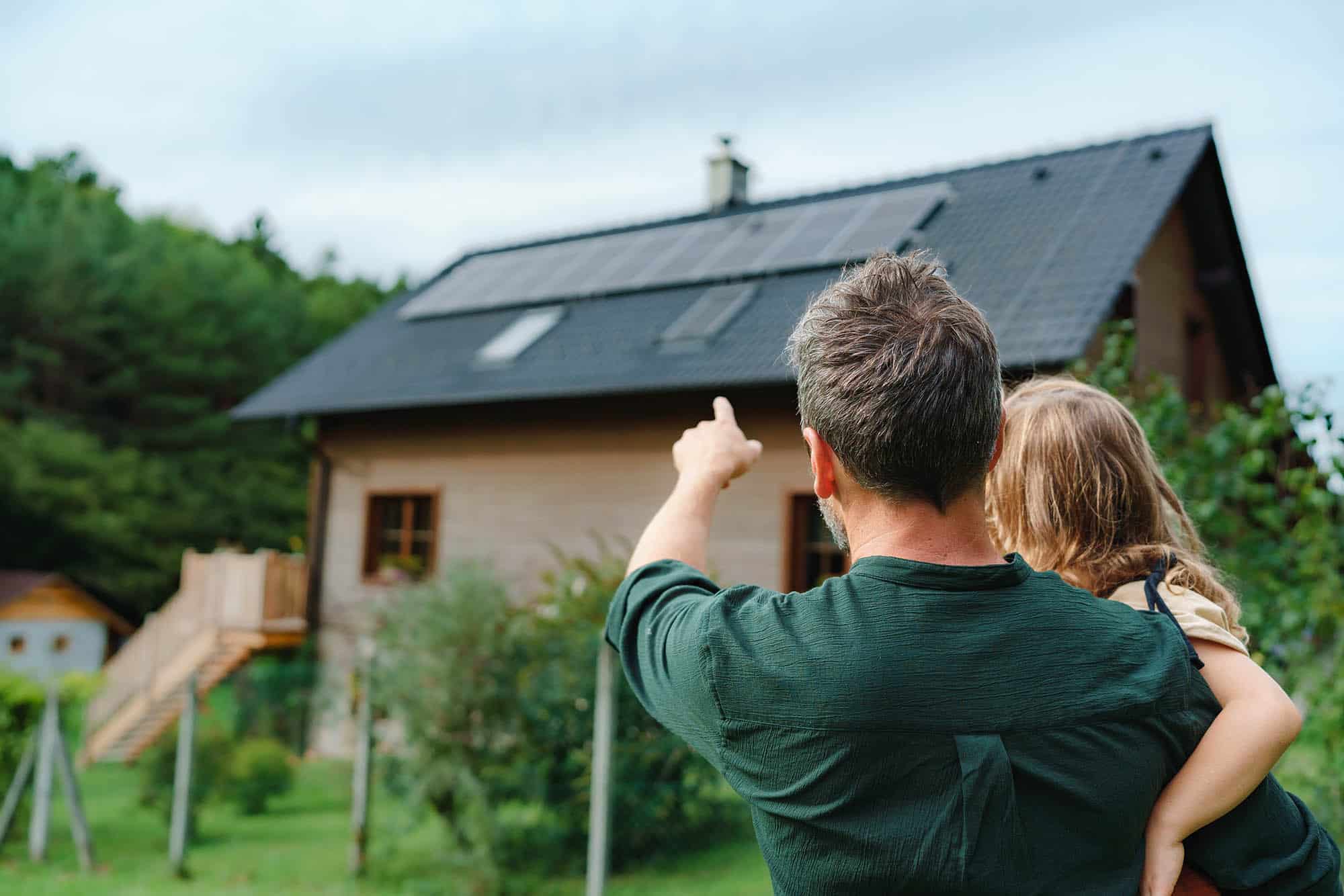Installing solar panels on a roof is one effective way to provide the globe with clean and renewable energy sources. Rooftop solar panels in Northern Ireland are becoming more and more well-liked as a practical solution to produce electricity while cutting carbon emissions.
Given the rising need for solar energy, it is crucial to comprehend what rooftop solar panels are, how they function, and the advantages of installing them in Northern Ireland.
You may learn everything there is to know about rooftop solar panels in Northern Ireland by reading this article. And it covers all you need to know before deciding whether to put them on your roof. This article will offer useful insight into the world of rooftop solar panels in Northern Ireland, whether you are a homeowner, business owner, or policy maker.
What Are Rooftop Solar Panels In Northern Ireland?
Rooftop solar panels, usually referred to as photovoltaic (PV) panels, are gadgets that transform sunlight into power. Although they can be installed on the floor or other buildings, these panels are typically on the roof.
As a sustainable approach to producing electricity and lessening dependence on conventional energy sources, rooftop solar panels are becoming more and more common in Northern Ireland. These gadgets, which are typically mounted on roofs, are made up of solar cells, a frame, and an inverter that turns sunlight into electricity.
Rooftop solar panels produce clean, renewable energy, eliminating reliance on exhaustible fossil fuels that worsen the environment and contribute to global warming. The extra electricity the panels produce can also be sold back to the grid to make more money. Energy demand, available roof space, and sunlight all play a role in determining the size and quantity of solar panels needed for a certain structure.
Rooftop solar panels have advantages such as lowering energy prices, encouraging sustainable development, and lowering carbon emissions. Installing solar panels can assist lower energy costs and provide a passive income stream because solar energy is a plentiful source of electricity. In general, rooftop solar panels are a solid option for producing clean rooftop solar panels in Northern Ireland.

How Rooftop Solar Panels Work In Northern Ireland?
Rooftop solar panels in Northern Ireland generate power by utilizing the sun’s energy. Silicon and other materials are used to create photovoltaic cells that turn sunlight into direct current (DC) electricity and make up solar panels. Alternating current (AC) electricity, which may be utilized to power electrical devices inside a building, is created from this electricity by an inverter.
Rooftop solar panels in Northern Ireland are frequently connected to the energy system, allowing households and businesses to sell extra electricity back into the grid. This procedure, known as net metering, helps cover the cost of the panels and provides a passive stream of income. Rooftop solar panels are a strong option for Northern Ireland’s sustainable development, reduction of carbon emissions, and production of clean, renewable energy.
Advantages Of Installing Rooftop Solar Panels in Northern Ireland
Below are detailed facts outlining the benefits of installing solar panels on rooftops in Northern Ireland:
- Clean and renewable energy source:
Rooftop solar panels offer a clean and renewable energy source that does not add to the production of harmful greenhouse gas emissions. This makes it a more sustainable alternative to conventional energy sources like coal and gas. - Passive income:
Income generated passively by selling extra electricity generated by solar panels back to the grid. This procedure, known as net metering, creates a passive income stream and aids in offsetting the cost of solar panels. - Reduced energy bills:
After installing solar panels, they can produce electricity for years, decreasing the need to purchase electricity from the grid. Over time, this may result in cheaper energy costs. - Energy Independence:
Homeowners and companies with rooftop solar panels can feel more independent from conventional energy sources by producing their own electricity. - Improve property value:
Installing solar panels can enhance the value of a property, making it a beneficial investment in the long run. - Low Maintenance and Reliable:
Solar panels are a low-maintenance option for producing electricity because they are dependable and require little upkeep once installed. - Government incentives:
These include the Renewable Heat Incentive (RHI) and the Smart Export Guarantee (SEG) for installing solar panels on homes and businesses in Northern Ireland. - Extended lifespan:
Rooftop solar panels have a long lifespan of 25 years or more on average, and they offer a steady energy source throughout time.
3 Types of Rooftop Solar Panels In Northern Ireland

Here are some details about three types of rooftop solar panels in Northern Ireland:
- Monocrystalline Solar Panels
These solar panels, which are made from a single silicon crystal, are among the most effective ones currently on the market. Monocrystalline solar panels are noted for their high power production and long longevity. They are dark in color. They are a fantastic choice for those with small roof spaces since they are more space-efficient than other solar panels. - Polycrystalline Solar Panels
Solar panels made of polycrystalline crystals are less powerful than those made of monocrystalline crystals and are lighter in color. These panels are less expensive to produce than monocrystalline solar panels since they are constructed of numerous silicon crystals. It is still a good choice for those seeking to generate electricity from their roof in Northern Ireland. - Thin-Film Solar Panels
These solar panels, which are the lightest and most flexible, are made of layers of photovoltaic material. Compared to monocrystalline and polycrystalline solar panels, thin-film solar panels are less efficient but easier to install and can be put on curved surfaces. They are a terrific choice for people with unusual roofs or those seeking a more aesthetically pleasing solution.
Summary
Solar energy is converted into electricity using rooftop solar panels, which are often installed atop roofs. The use of rooftop solar panels in Northern Ireland is growing in popularity to generate clean, renewable energy and cut carbon emissions. The size and number of solar panels required for a given structure depend on a variety of factors, including energy demand, available roof space, and sunlight. Lower energy costs, promoting sustainable development, and lowering carbon emissions are all benefits of installing solar panels.
Rooftop solar panels in Northern Ireland capture solar energy to produce electricity. Rooftop solar panels produce clean, renewable energy, removing dependence on fossil fuels that harm the environment and contribute to global warming. The additional electricity the panels create can also be sold back to the grid to make more money. Solar panels and photovoltaic cells, which convert sunlight into direct current electricity, are made of silicon and other materials.
Rooftop solar panels in Northern Ireland are frequently connected to the power system, enabling homes and businesses to sell extra electricity back into the grid. Rooftop solar panels provide a clean, renewable energy source that does not contribute to the creation of harmful greenhouse gas emissions. A profitable long-term investment, installing solar panels can raise a property’s value. The three types of rooftop solar panels in Northern Ireland are monocrystalline, polycrystalline, and thin film solar panels.


